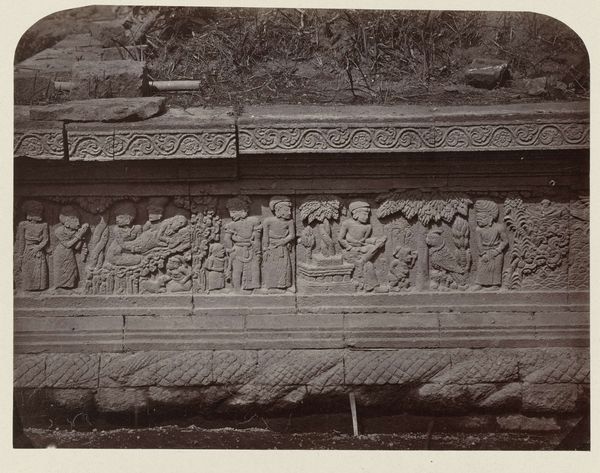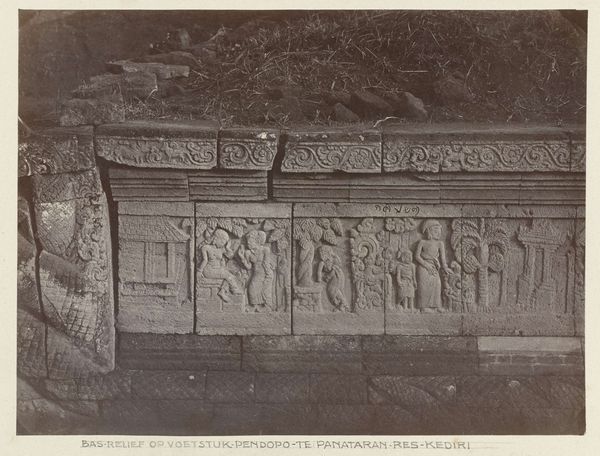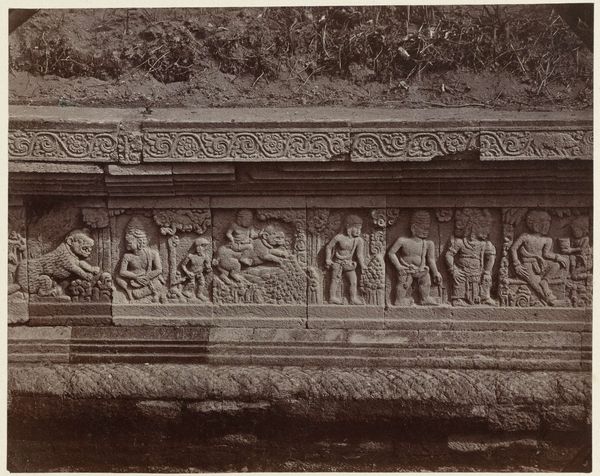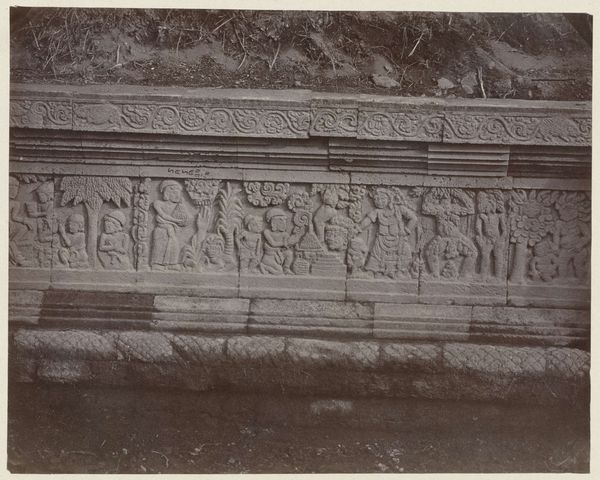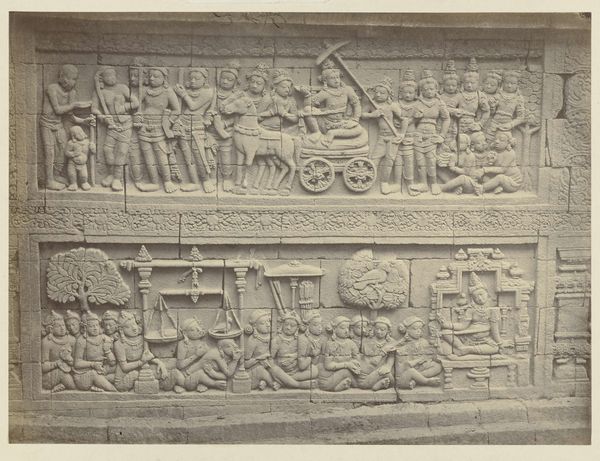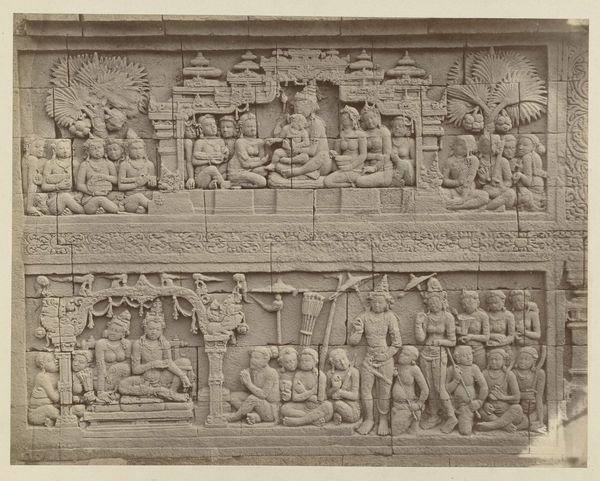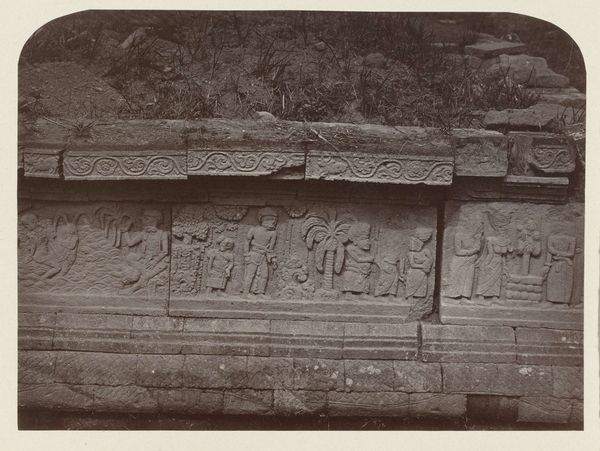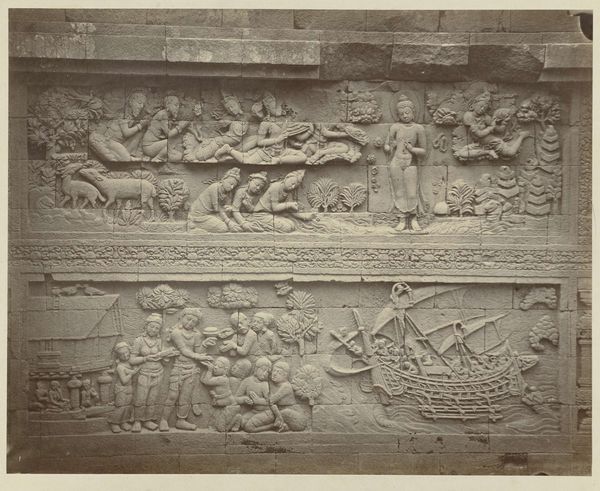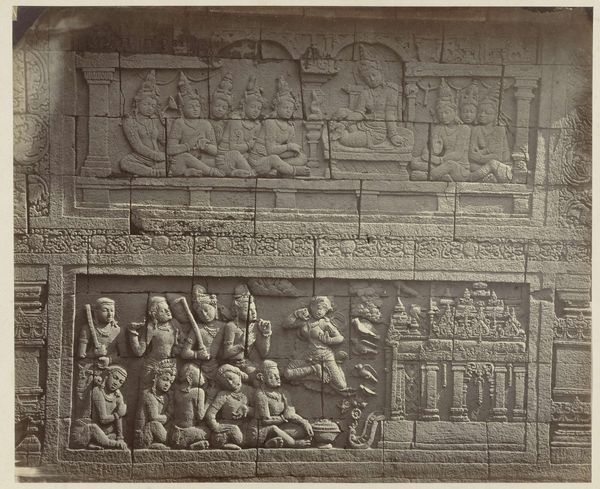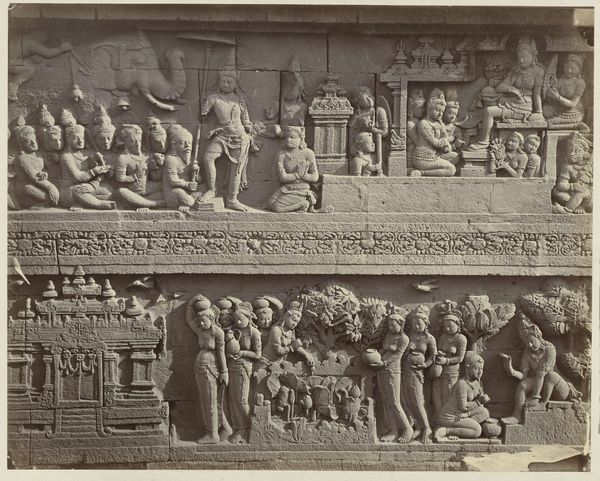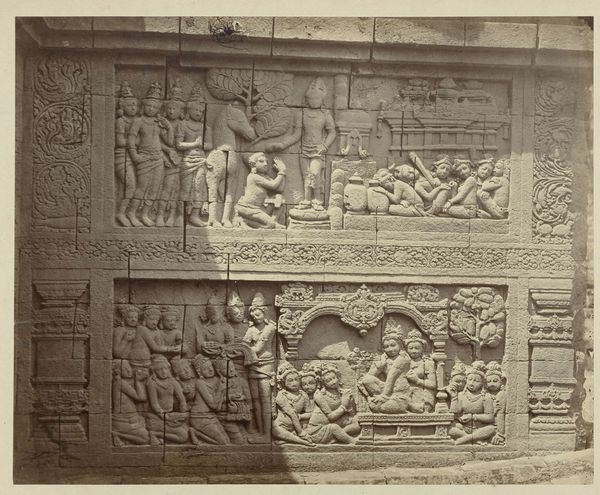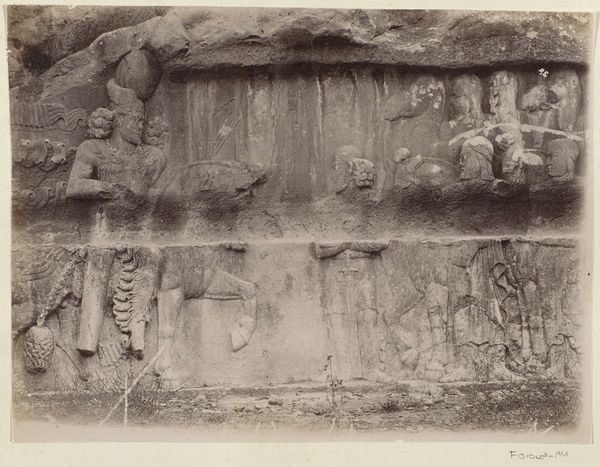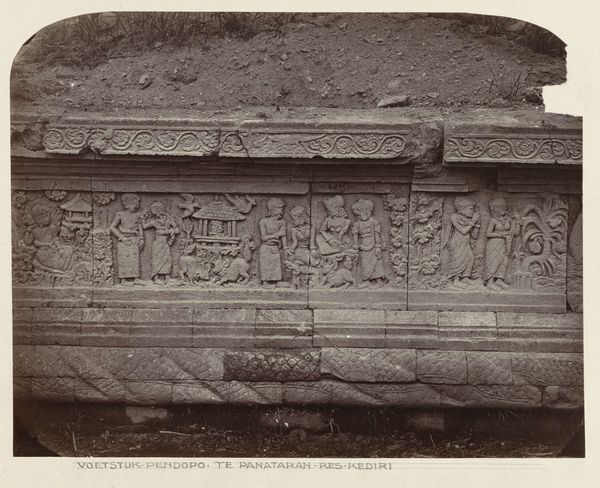
Reliëf op het voetstuk van een pendopo aan de oostzijde van Candi Panataran Possibly 1867
0:00
0:00
carving, relief, photography, sculpture, gelatin-silver-print
#
carving
#
narrative-art
#
sculpture
#
asian-art
#
relief
#
figuration
#
photography
#
ancient-mediterranean
#
sculpture
#
gelatin-silver-print
Dimensions: height 210 mm, width 260 mm
Copyright: Rijks Museum: Open Domain
Editor: This gelatin-silver print from around 1867, titled "Relief on the Pedestal of a Pendopo on the East Side of Candi Panataran" by Isidore Kinsbergen, depicts a carved stone relief. It’s amazing to see this level of detail captured so long ago. It feels almost dreamlike, faded but still vivid. What do you see in this piece? Curator: I see layers upon layers of cultural memory etched in stone and then captured through the lens of early photography. Notice how the figures, though worn by time, retain a distinct expressiveness? They speak to archetypal stories, likely drawn from Hindu or Javanese folklore. The snake-like pattern on the base could signify protection and foundation. Editor: The figures seem to be engaged in various activities, almost like a frozen narrative. Is there a specific story being told? Curator: Possibly. The repetition of certain figures, their gestures and positioning, strongly suggest a sequence of events unfolding. To fully decipher the narrative, we’d need to delve into the specific iconography of Javanese temples of that era. Do you notice how each figure is positioned in relation to one another and the background elements? Editor: Now that you mention it, I see that the relationships between figures appear deliberate. Is it typical for reliefs like these to serve an educational purpose, or to document something? Curator: It's both, actually. Religious and moral lessons were frequently imparted through these visual narratives. The placement on the pendopo, a public structure, indicates the reliefs aimed to influence the behaviour, or mindset, of anyone visiting or residing in the region. The psychological impact of these constant reminders of cultural stories would be powerful. Editor: So it’s a window into both the artistic skill and the cultural values of the time. It's amazing how one image can convey so much. I will never think about it the same way. Curator: Exactly! And it invites us to contemplate what stories and symbols we’re embedding into our own landscapes today and how they will inform future societies.
Comments
No comments
Be the first to comment and join the conversation on the ultimate creative platform.

